There’s something strange and stirring about Side. It’s a place where you can peer through glass walkways in a touristy café and glimpse ancient ruins beneath your feet. A place where blooming bougainvillea and Roman columns compete for attention. And a place where, in the shadow of one of the Mediterranean’s most iconic sunsets, the Temple of Apollo still stands—broken, beautiful, and defiantly here.
We visited Side as the final stop on a day trip that also included Perge and Aspendos. As the sun began its long descent into the sea, we wandered through stone pathways, drank fresh pomegranate juice, and tried to piece together a past that stretches back over 2,000 years.
A city layered in history
Side (pronounced see-day) is one of Turkey’s most famous archaeological sites, located on a small peninsula on the southern Mediterranean coast. The name Side may, in fact, derive from the ancient Anatolian word for "pomegranate"—a symbol of life, fertility, and abundance. You’ll still find them everywhere today: carved into stone, sold in juice stalls, and scattered across the nearby fields.
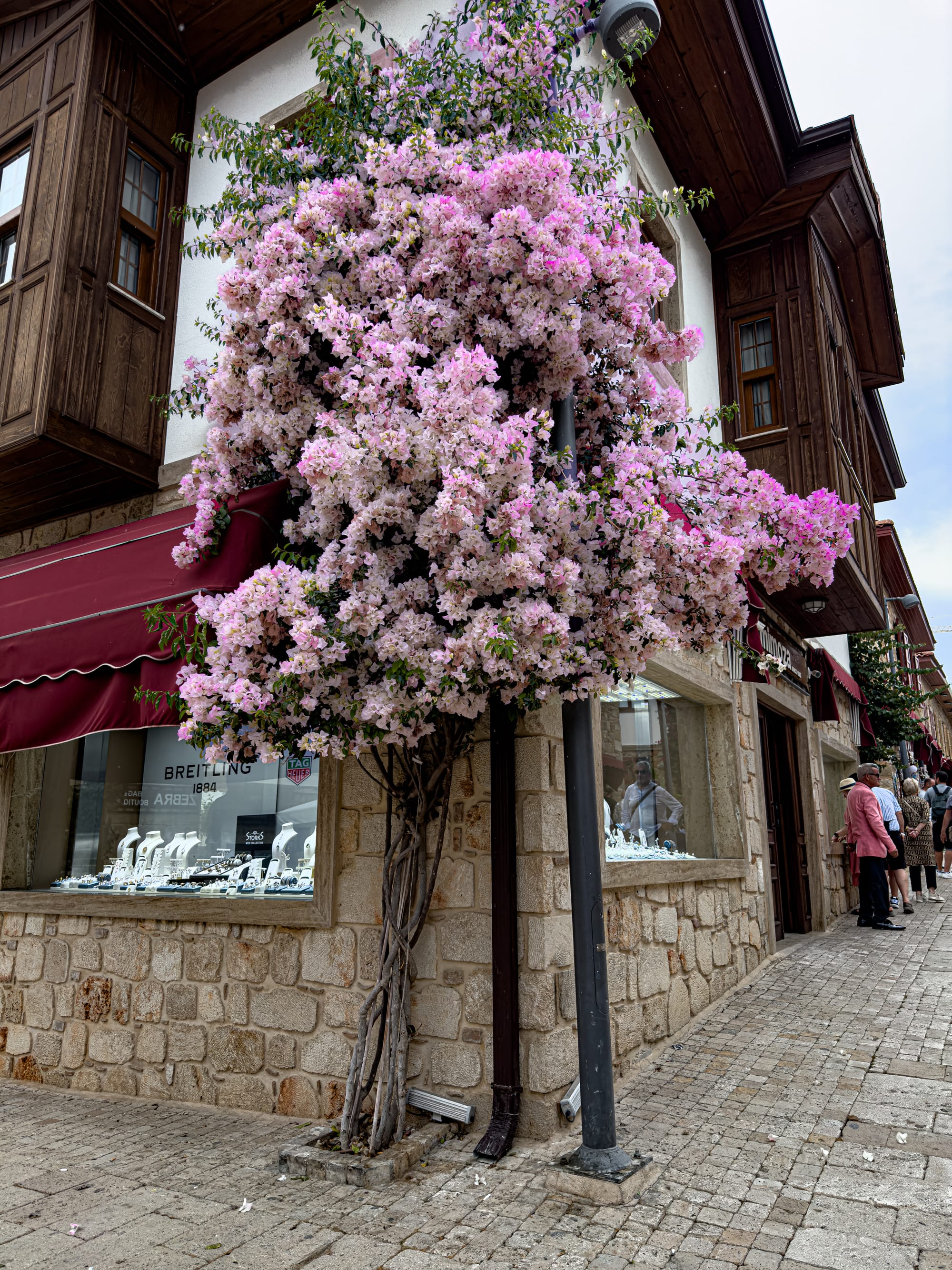
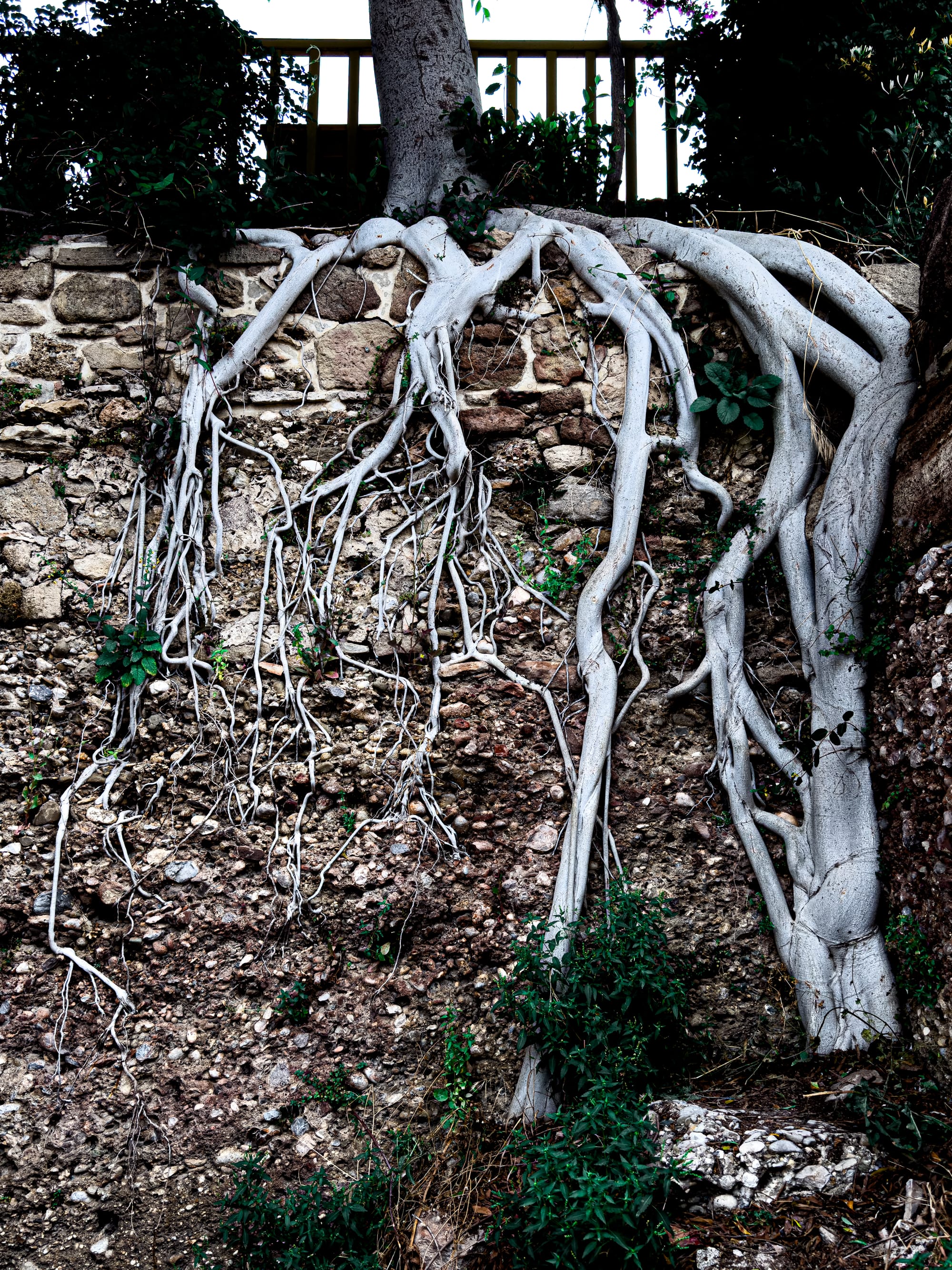
Flourishing above and burrowing below, Side’s flora seems to echo its history
The city dates back to at least the 7th century BCE, founded by Greek settlers and later becoming part of the Roman Empire. During its peak in the 2nd and 3rd centuries CE, Side was a bustling port and cultural center known for its harbors, temples, baths, and theaters. Over time, earthquakes and invasions rendered much of it ruinous—but not forgotten.
The Temple of Apollo
The Temple of Apollo is easily Side’s most iconic structure. Built in the 2nd century CE and dedicated to the Greco-Roman god of light, music, and prophecy, the temple once stood at the tip of the peninsula, greeting sailors as they returned from sea. Legend has it that this is where Cleopatra and Mark Antony once walked together.
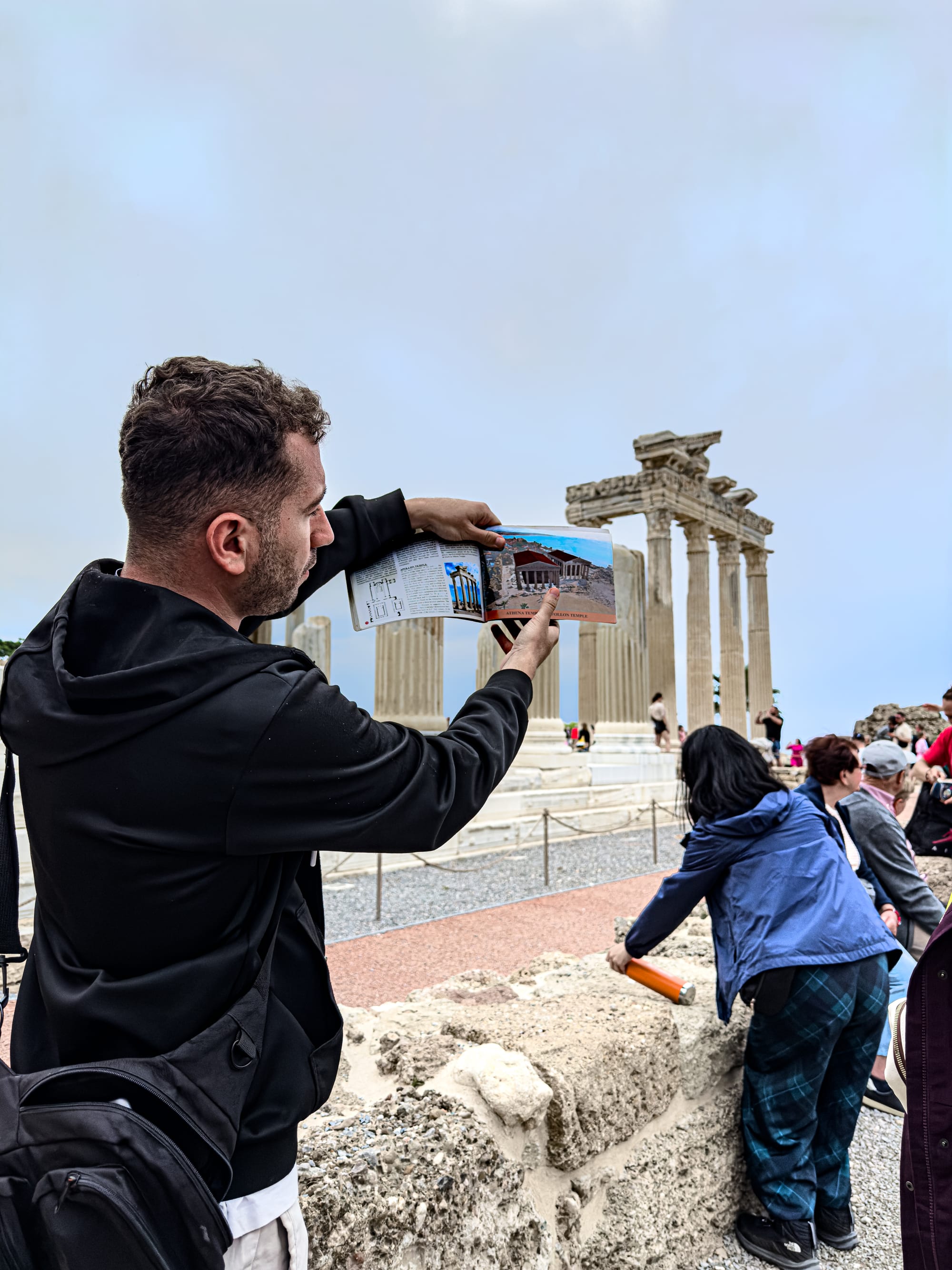
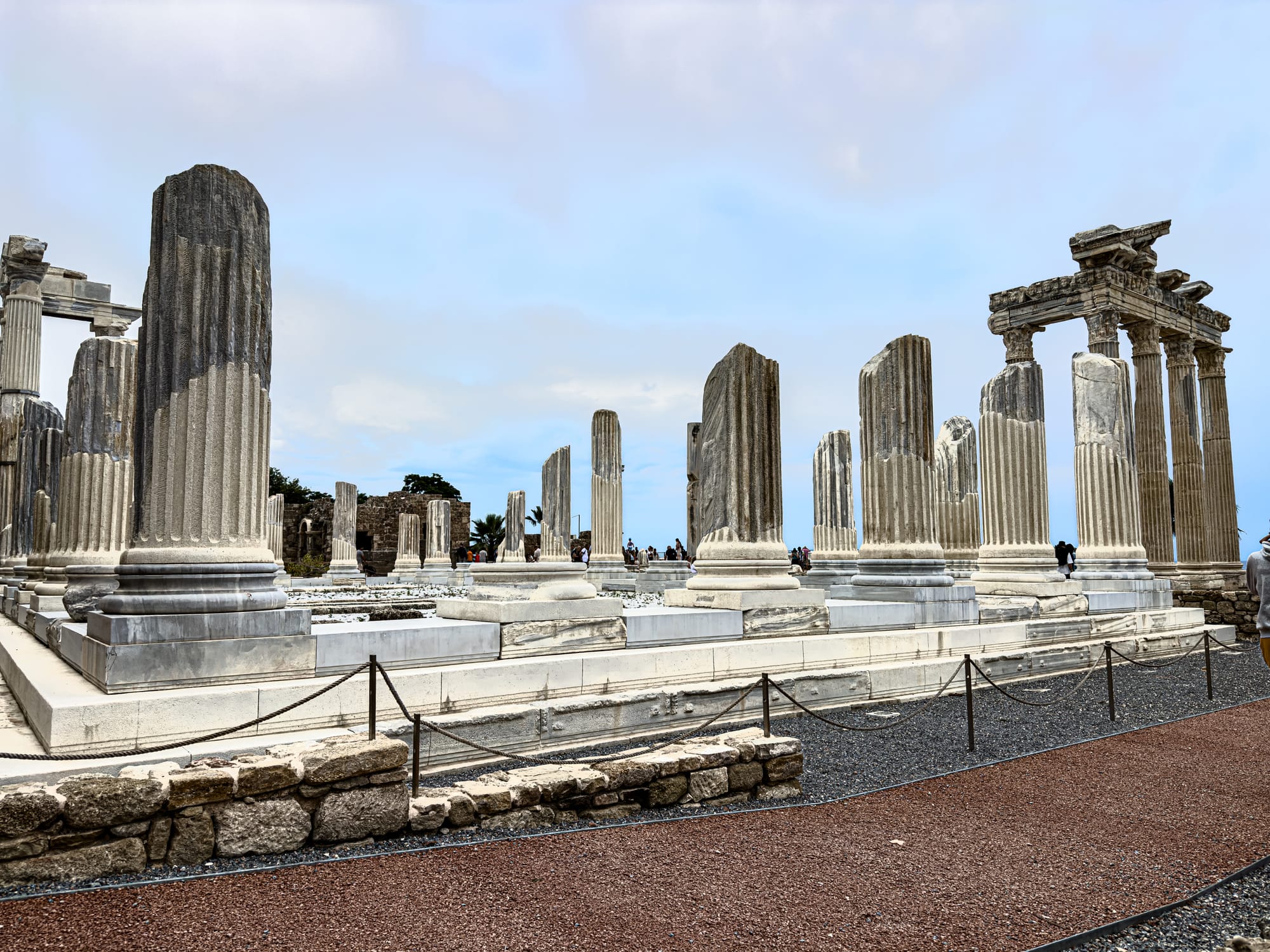
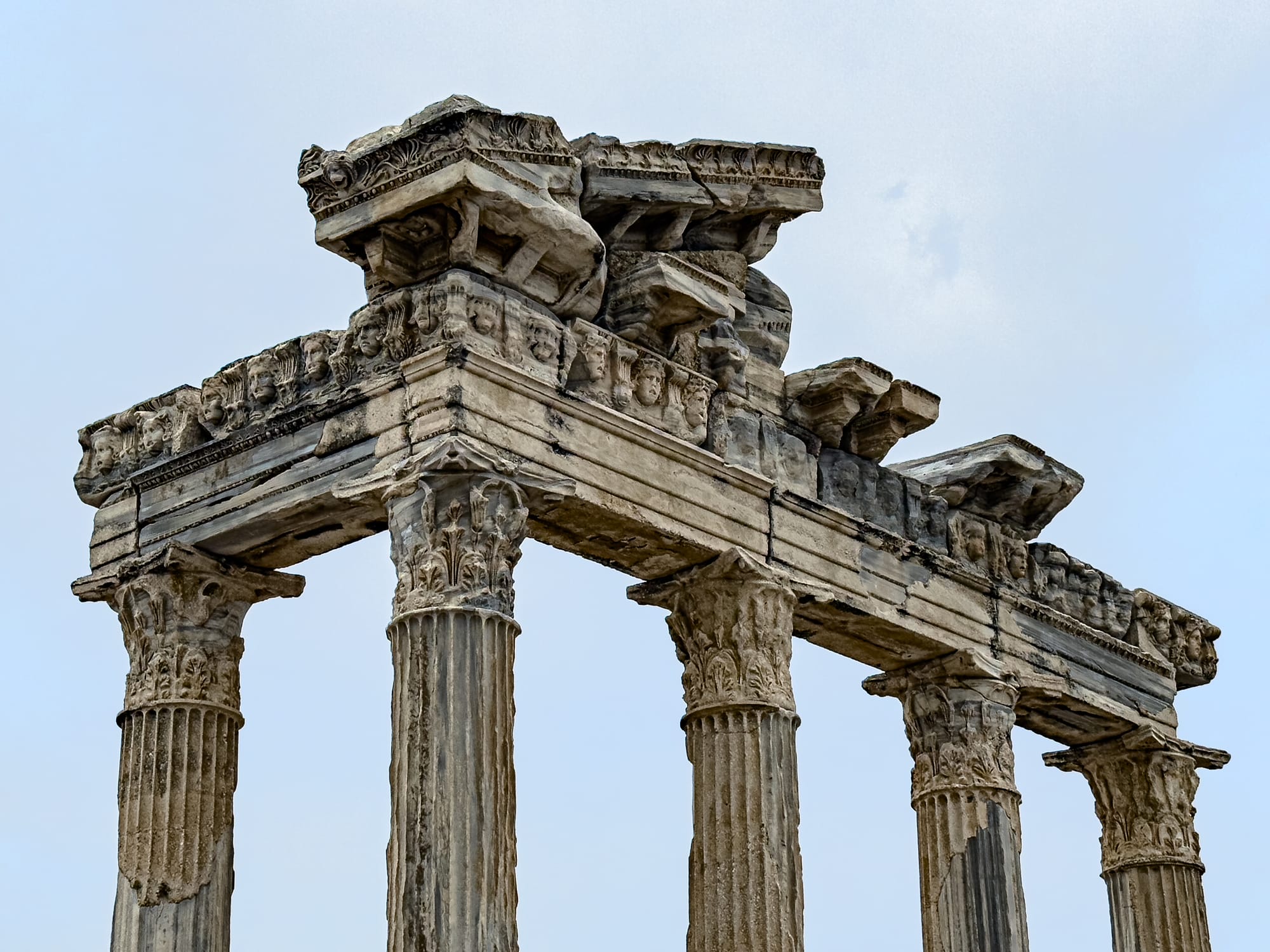
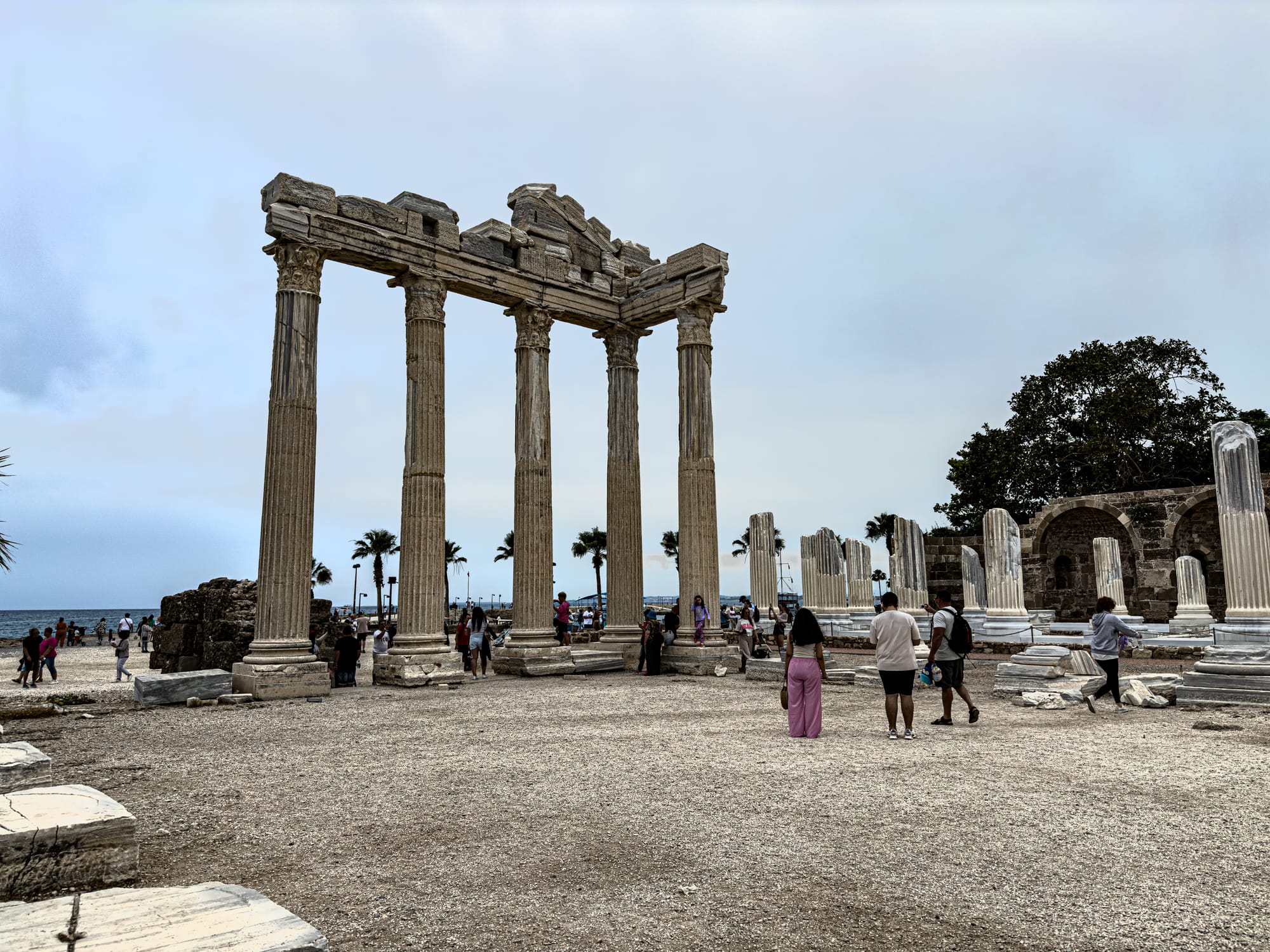
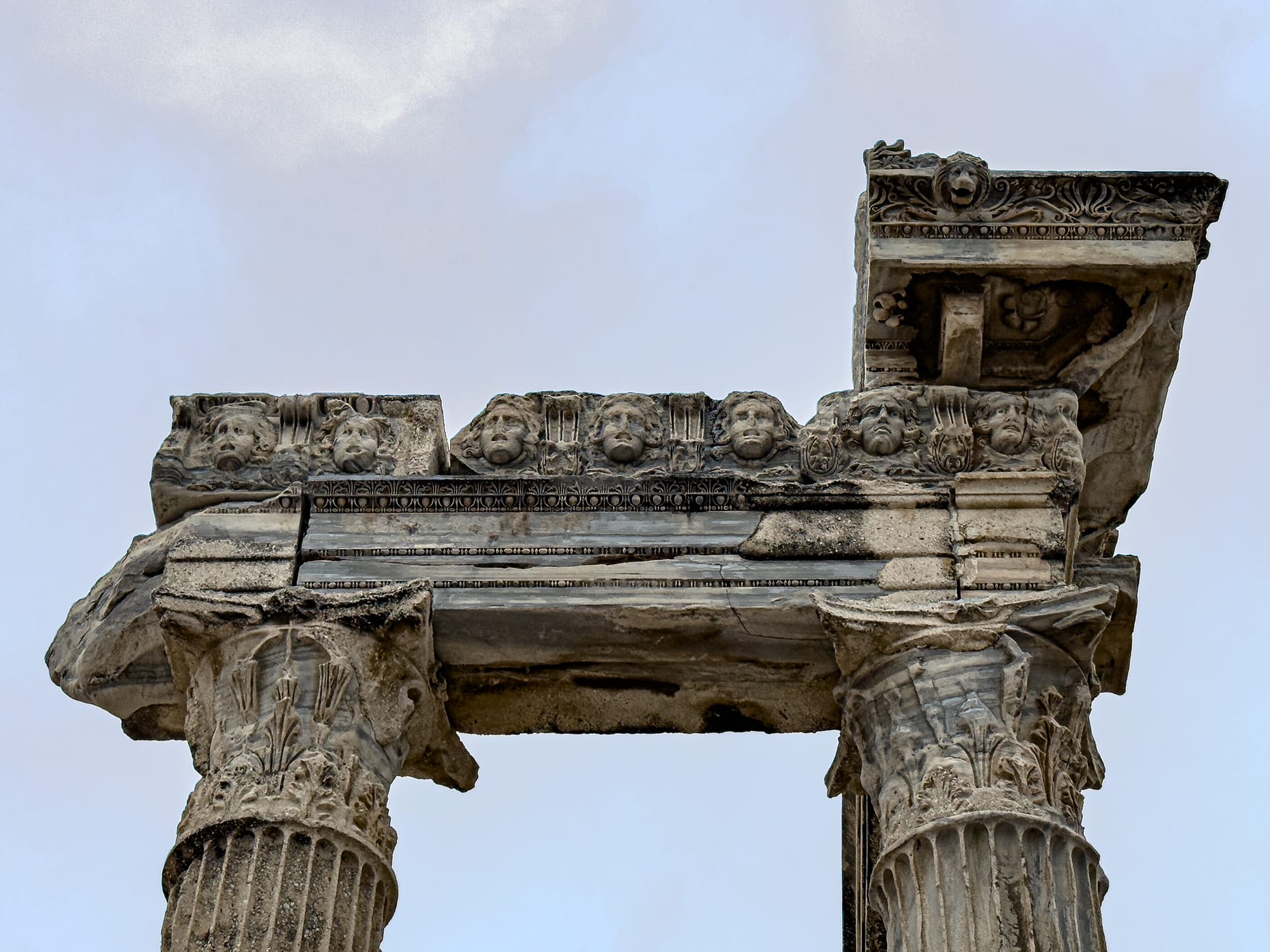
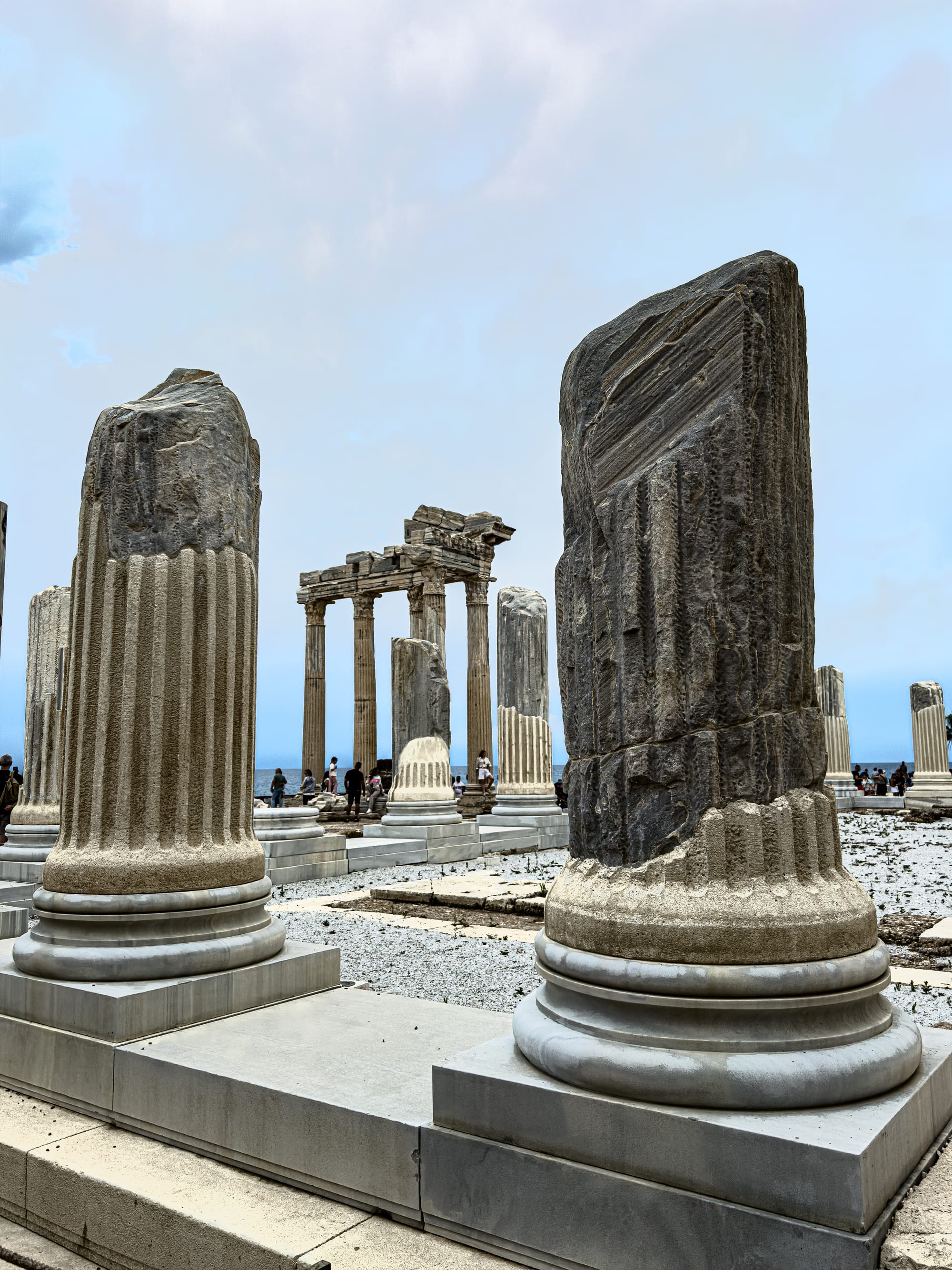
Fragments of the Temple of Apollo, where carved columns still hold the shape of sky and myth
Today, five of its fluted Corinthian columns remain, stark against the blue sky and backed by the waves of the Mediterranean. Even in partial ruin, the structure retains a sense of grandeur. As the light shifted over the day, we watched the columns glow gold, and the sea beyond darken into indigo.
Among the ruins
Though the Temple of Apollo is the most photographed, it’s far from the only treasure in Side. We walked past the monumental gate and city walls, marveled at the half-standing colonnade of the main street, and wandered through the agora—the former marketplace that once buzzed with vendors, philosophers, and gossip.
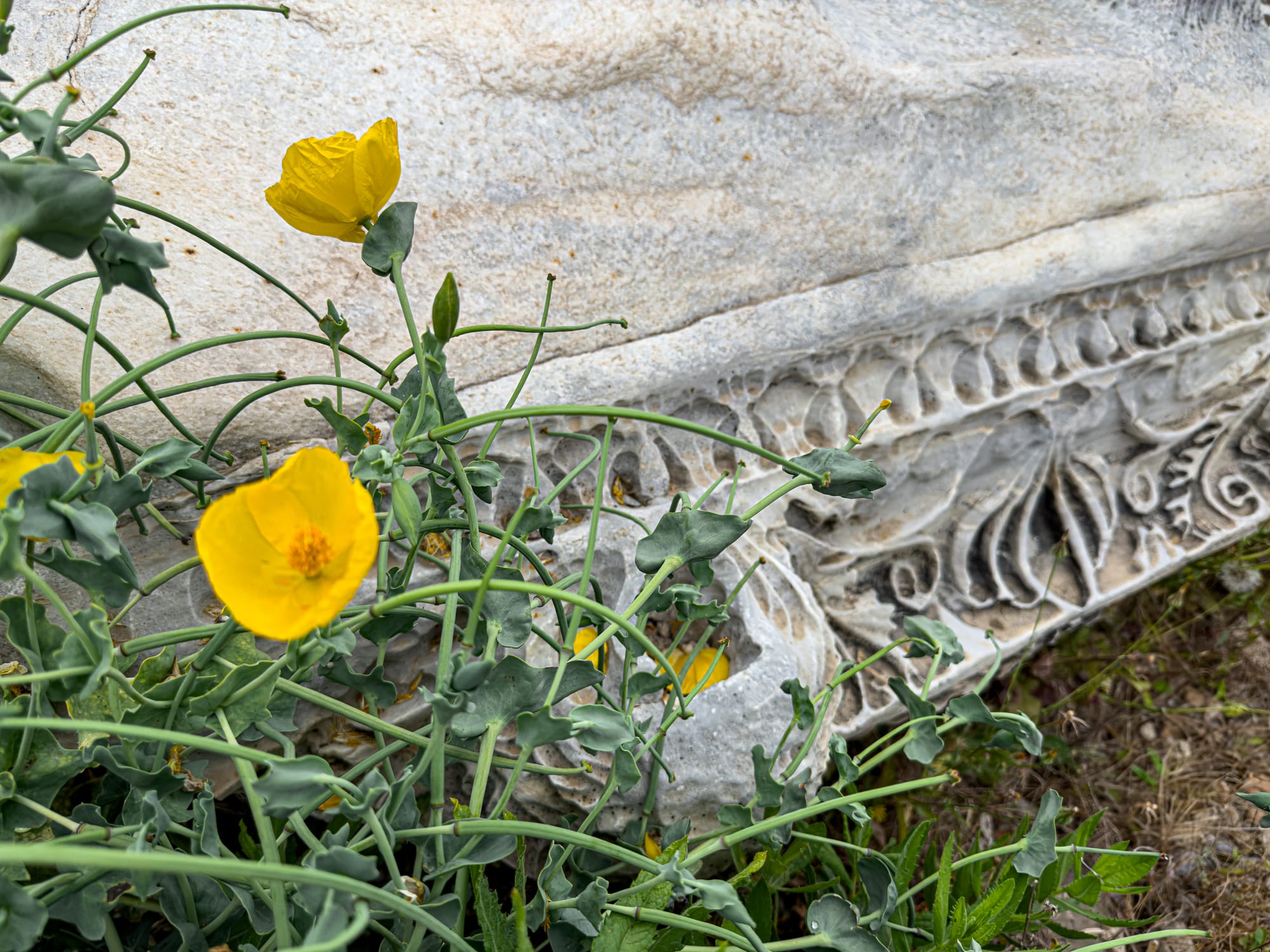
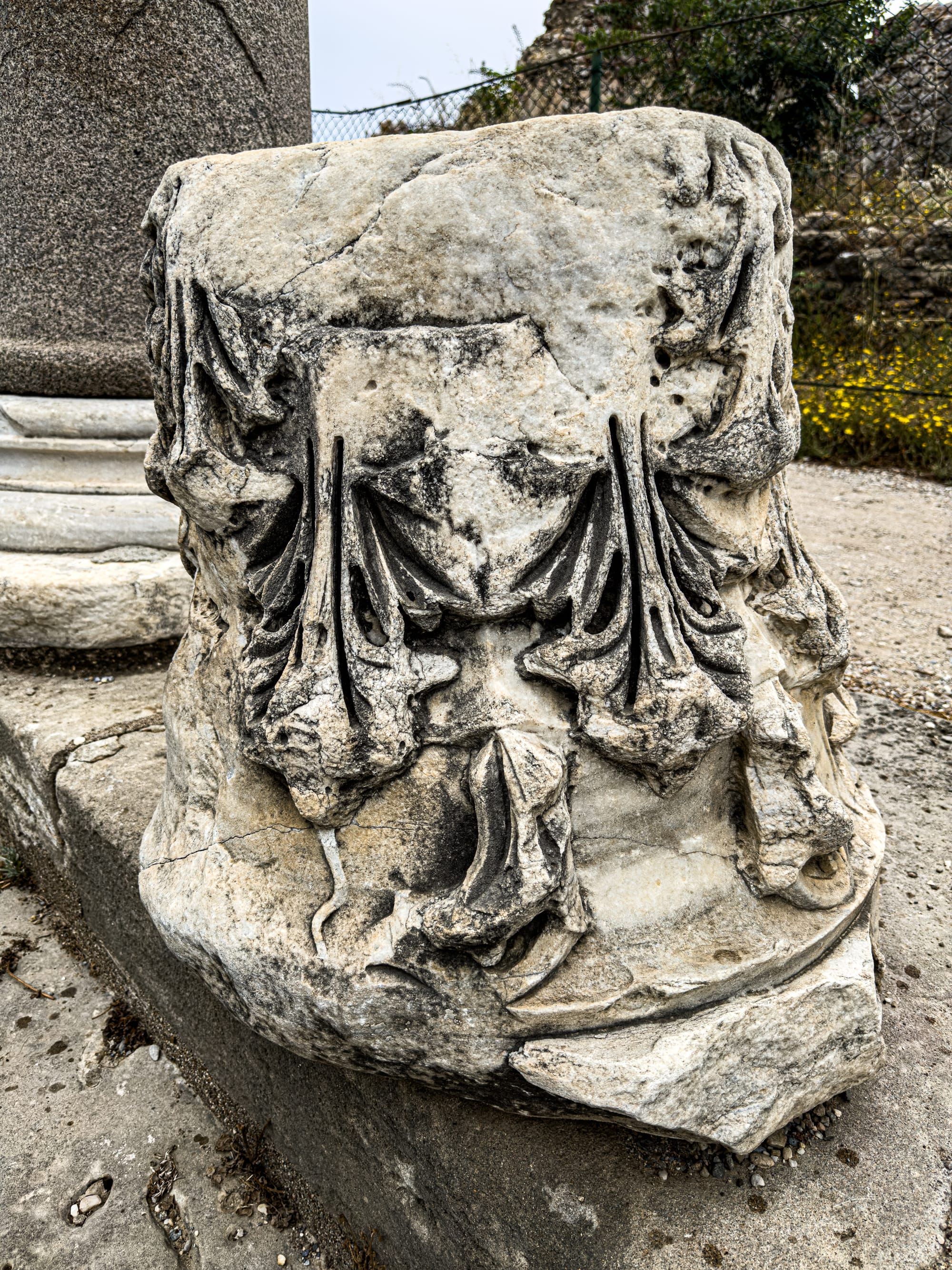
Carved florals—real and stone—bloom quietly between eras
Side’s ancient theater, one of the largest in Anatolia, could once seat 15,000 people. Though we didn’t linger long there, the scale alone was astonishing. Other highlights include the nymphaeum (a monumental fountain), Roman baths, and aqueducts that once carried fresh water from the mountains.
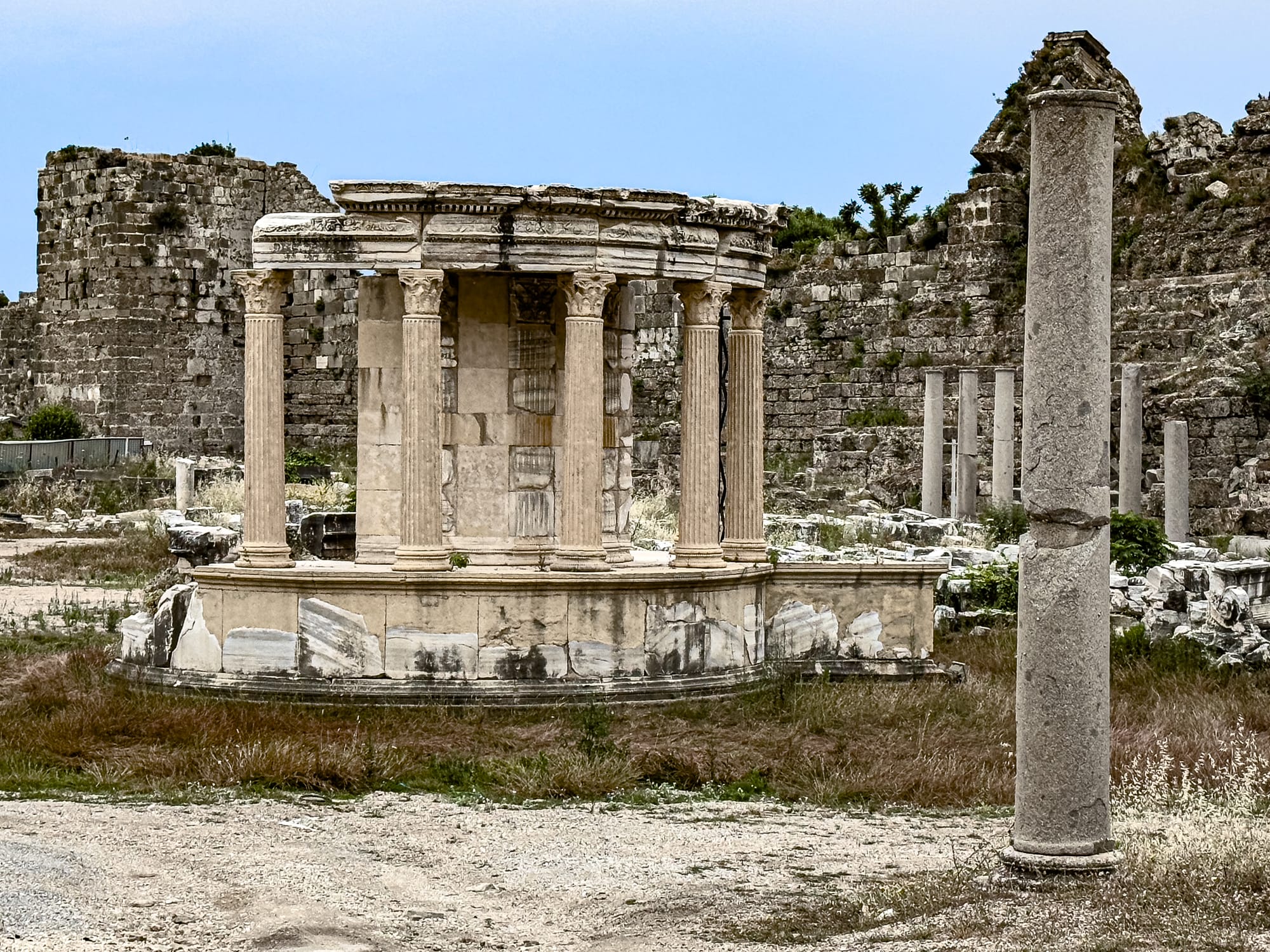

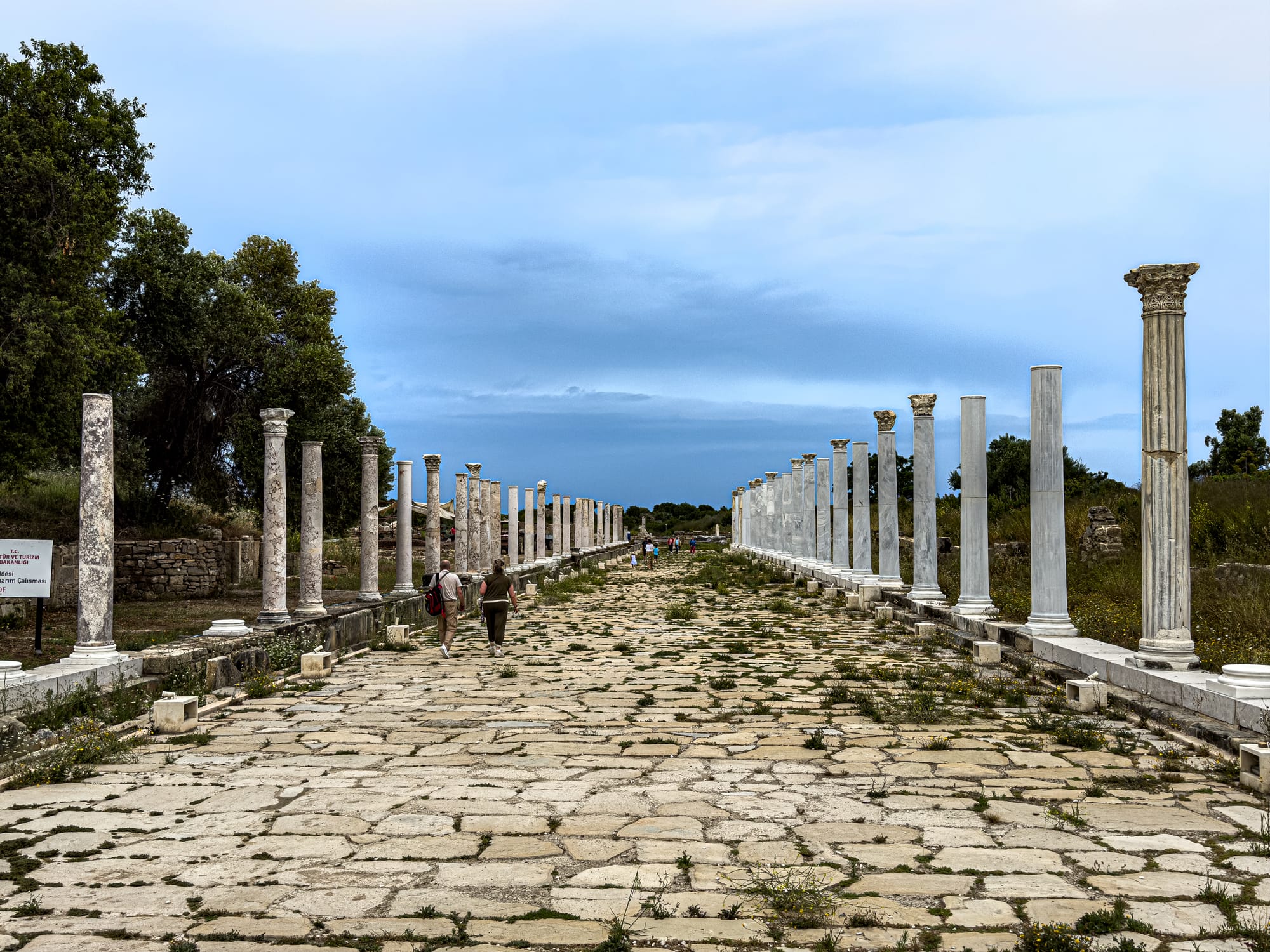
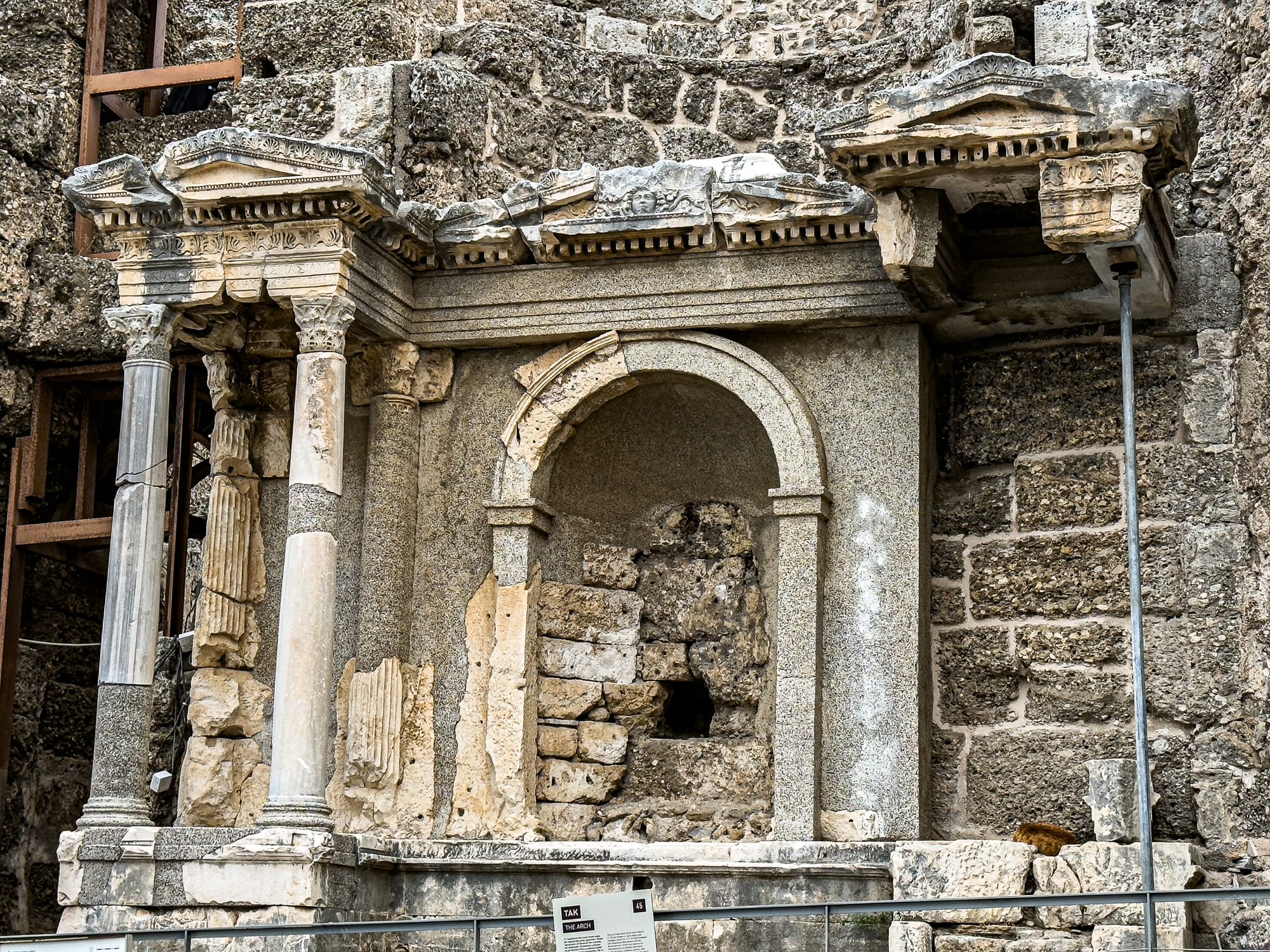
The rest of Side: colonnades, fountains, and half-standing memories
What’s remarkable about Side is how much of this is still accessible—not roped off or over-reconstructed, but present. You can touch the stone. You can walk the streets. You can imagine.
A modern overlay
Side today is also a modern town: full of shops, restaurants, ice cream stands, and boat tours. But unlike some ancient sites cordoned off from the present, Side is layered directly underfoot. Quite literally.
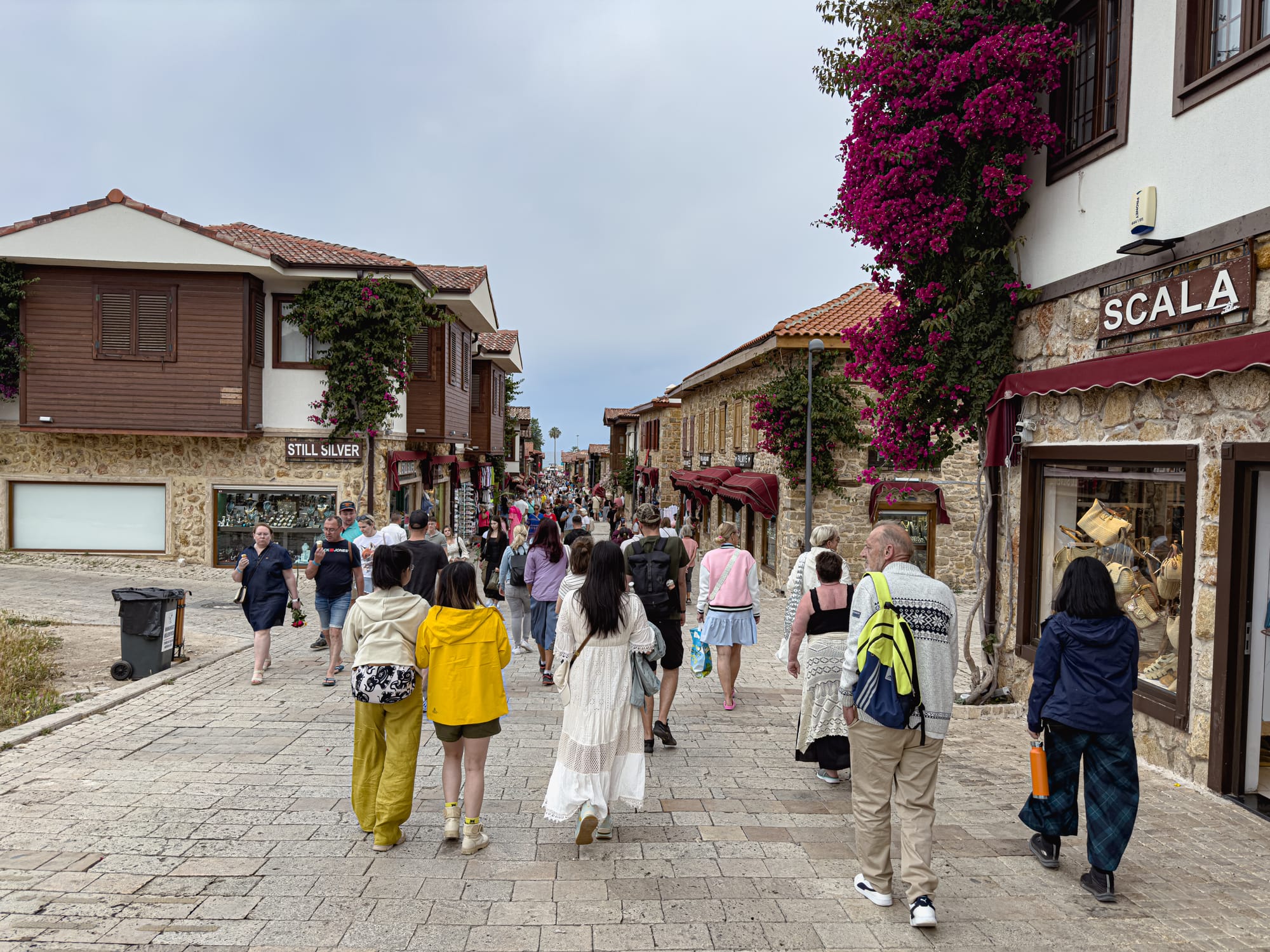
In several parts of the modern city, you’ll find glass walkways built over ongoing excavations. Through them, you can look down and see mosaic floors, column fragments, and pathways from centuries past. It makes the experience feel continuous—not something you enter and exit, but something you’re still within.
Poppies, pomegranates, and petals
We also loved the plant life in and around the ruins. Poppies burst through cracks in stone.
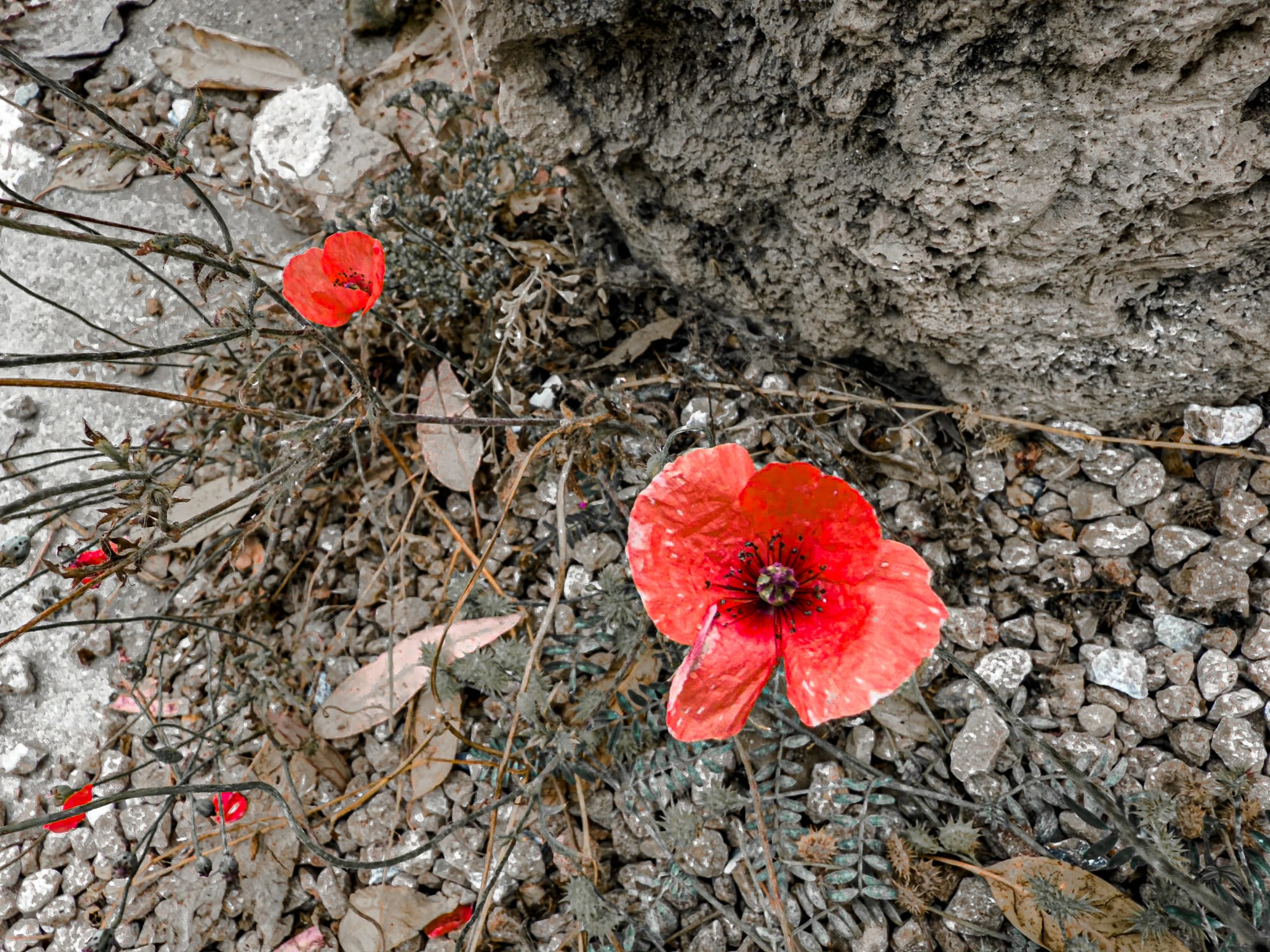
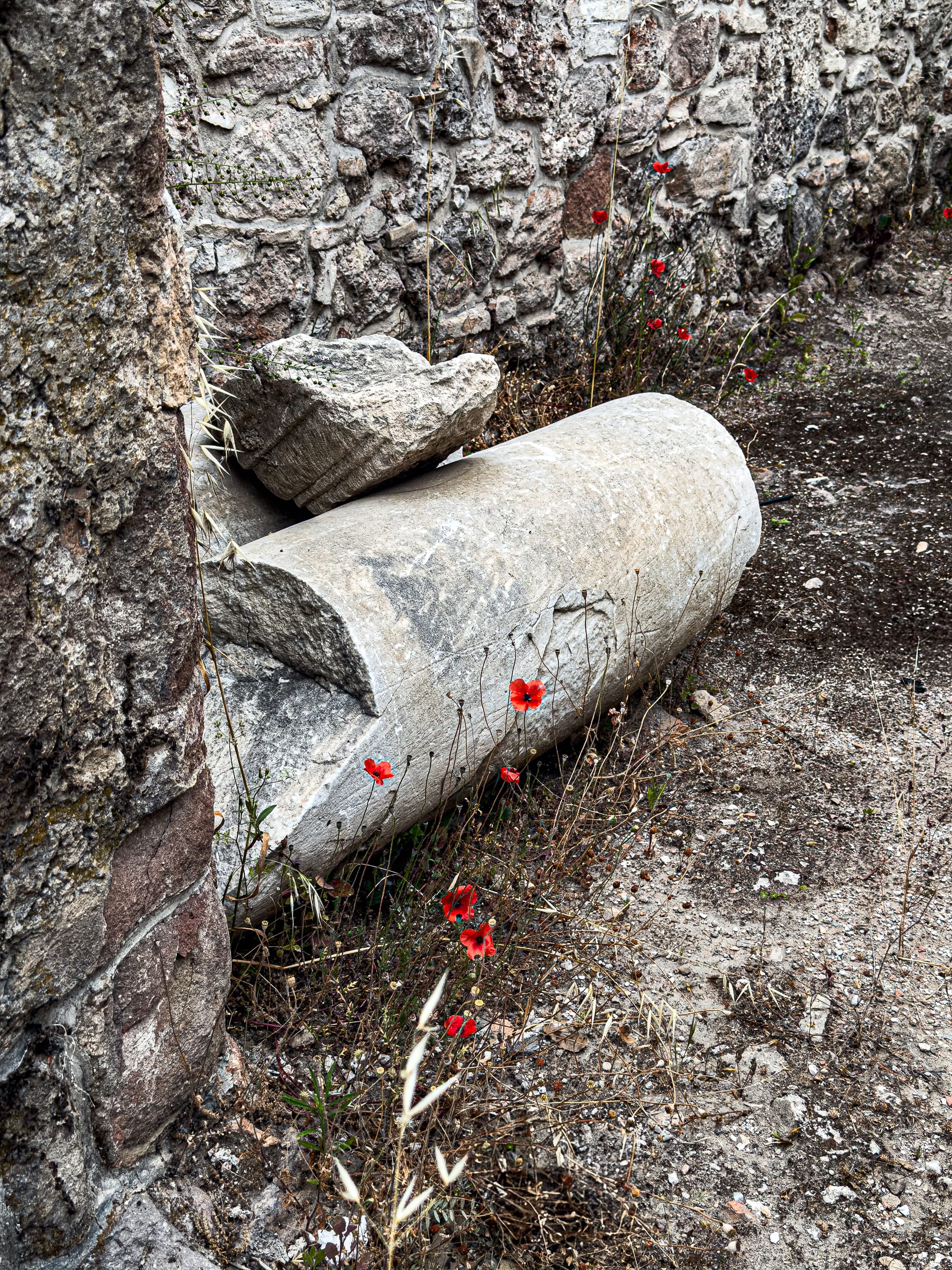
Poppies blooming between broken stones—a quiet reminder that even ruins seed new life
Marigolds and lantana clustered near café entrances. And that signature fruit—pomegranates—offered fresh juice after hours of walking under the sun.
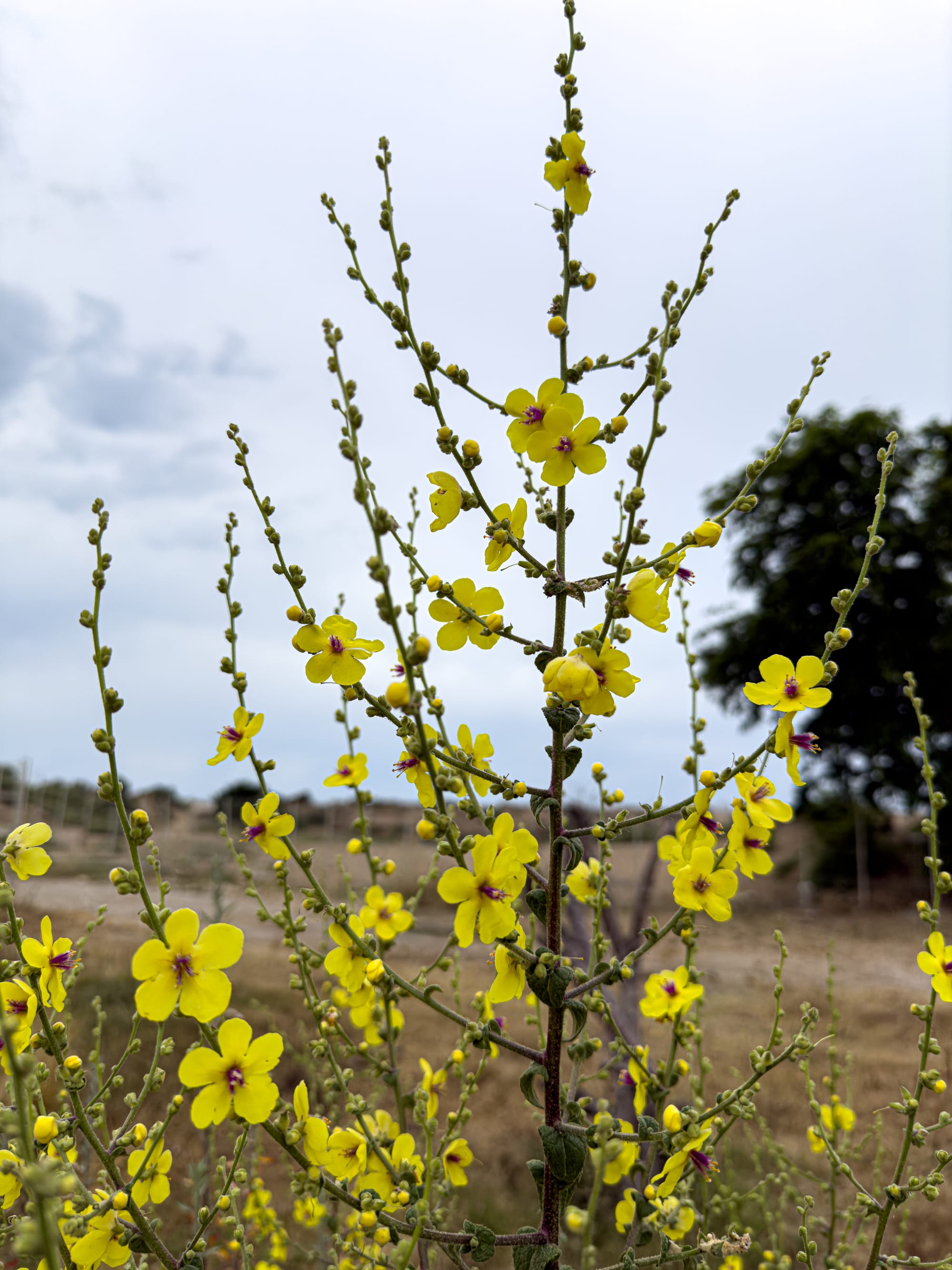
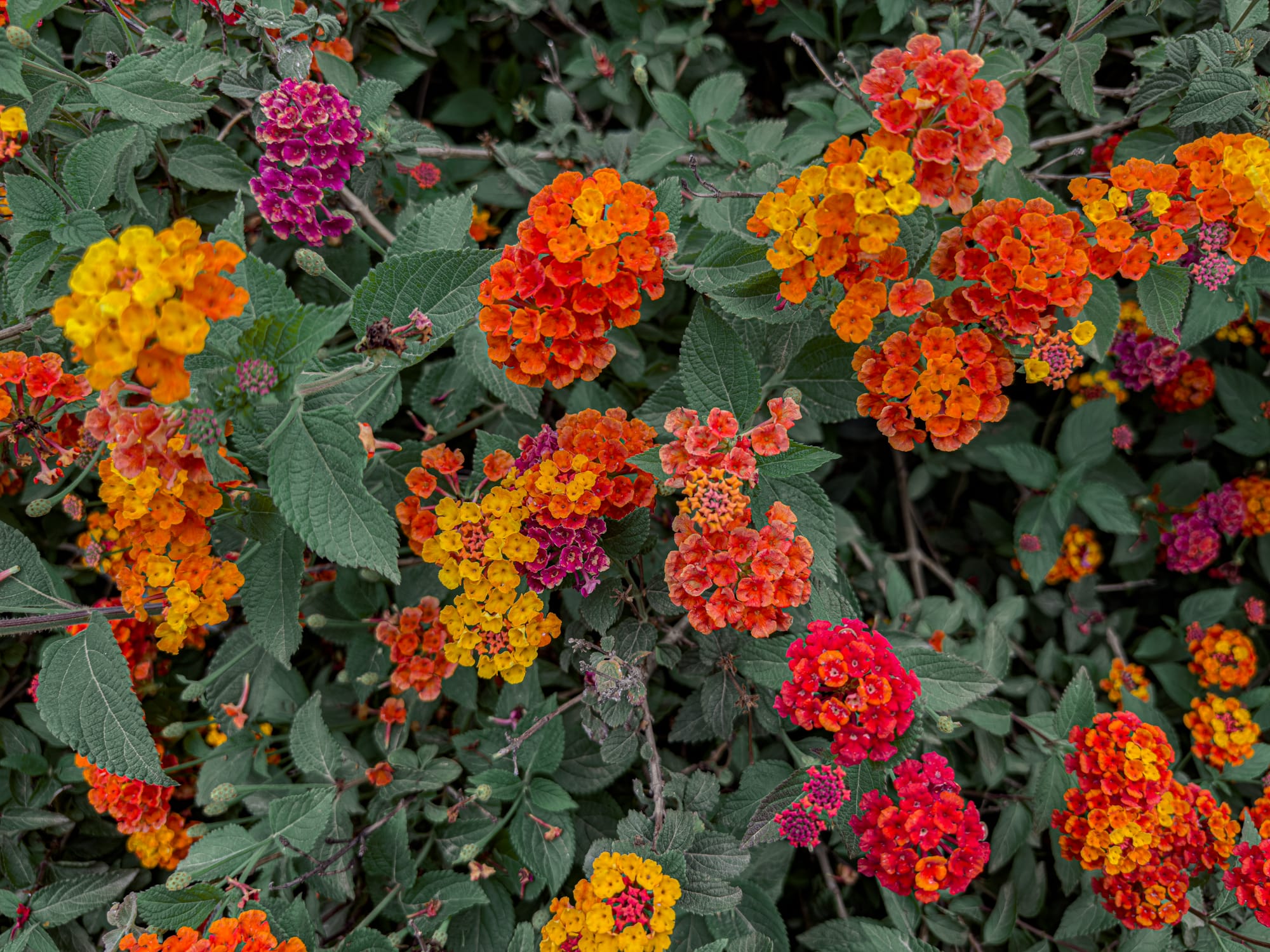
Wild verbascum and clusters of lantana add bursts of color to Side’s stone and sky
The florals weren’t just background—they softened the stone, carried movement, reminded us this place was never static. Even now, things bloom here.
A cool pause before heading on
After exploring the ruins, we found a small juice stand and ordered fresh-squeezed pomegranate. Bright pink, sweet-tart, and slightly chilled—it was the perfect ending before the van rolled on.
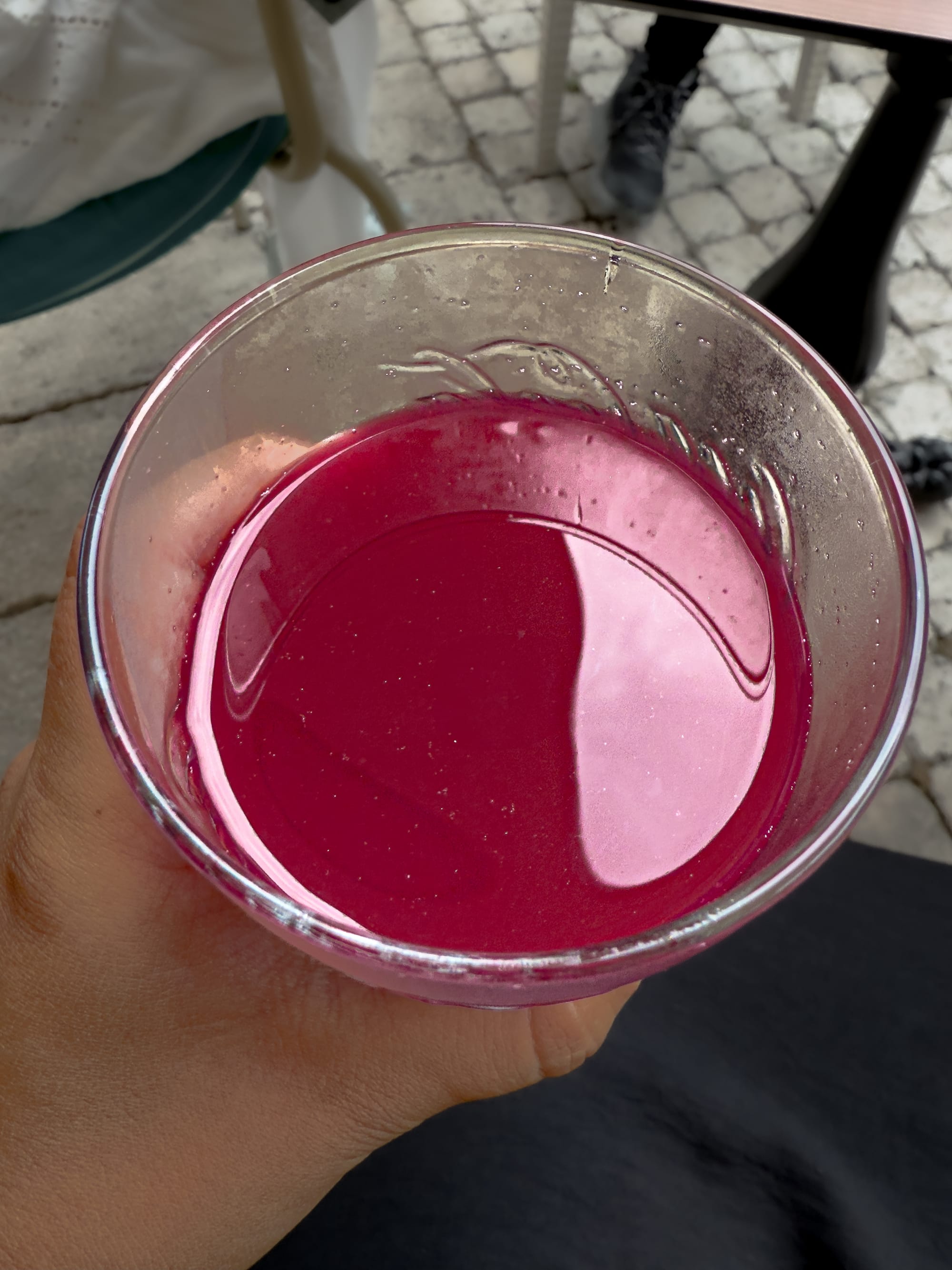
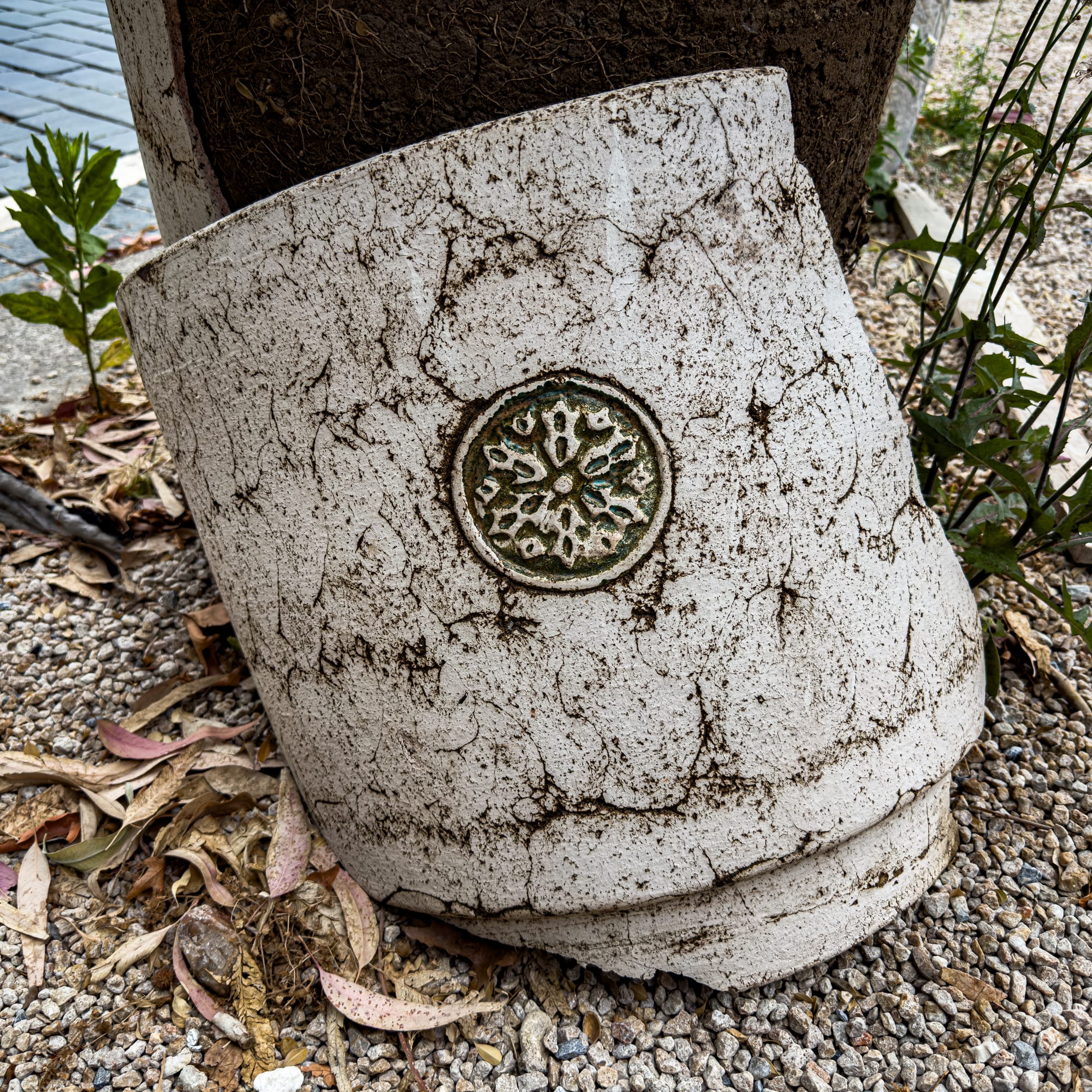
A chilled glass of fresh pomegranate juice and a carved emblem nod to Side’s ancient name and enduring symbols
We’d recommend visiting Side as part of a longer day trip. Ours was with a tour that also included Perge and Aspendos, which made the historical arc feel full.






